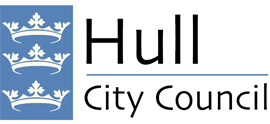Hull Museums Kingston-upon-Hull, England, United Kingdom
Wilberforce House Museum is a seventeenth-century historic building which was the birthplace of the anti-slavery abolitionist William Wilberforce (1759–1833). Built in the 1660s, the house has been a family home, merchant bank, and commercial offices before becoming a museum in 1906. The Museum can be considered one of the earliest recorded anti-slavery museums in the world. The slavery and abolition archive collection held at the William Wilberforce House Museum contains ephemera relating to William Wilberforce, the slave trade, slavery, and abolition which dates from the period 1760–1925.
The collection includes the personal correspondence of William Wilberforce. These letters deal with family affairs, Madame de Staël’s exile, Thomas Buxton, Wilberforce’s place in the anti-slavery movement, and slavery issues. Also included within the collection is William Wilberforce’s diary (1814–1824), in which Wilberforce records personal and political recollections.
The considerable slavery and anti-slavery ephemera (circa 1760–1925) include plantation records for the estates of “Friendship,” “Good Intent,” “Schepmoed,” “Good Success,” and “Bacolet.” Other notable slavery archives include a slave trader’s log book, 1764; An Inventory of the Valley Plantation, St John’s, Jamaica, 1787; and a Royal African Company broadsheet, circa 1700. On permanent display is the Brookes or “Brooks” ship model used by William Wilberforce during the Parliamentary Enquiry into the Slave Trade. The Museum also contains material relating to the Abolition Campaign, including anti-slavery notices, songs, poems, speeches, and anti-slavery ceramics.
Related Topics:
Related Pages:
-
 Emancipation Movements
Emancipation Movements
-
 Olaudah Equiano
Olaudah Equiano
-
 Abolition of Slave Trade
Abolition of Slave Trade
-
 Middle Passage
Middle Passage
-
 Mary Prince
Mary Prince
-
 Abolition of Slavery
Abolition of Slavery


